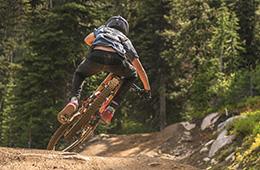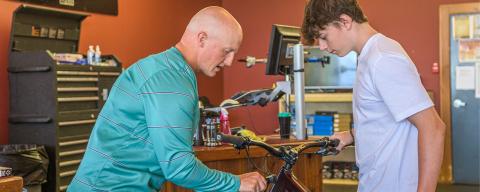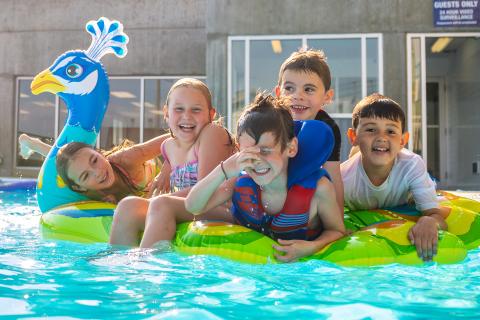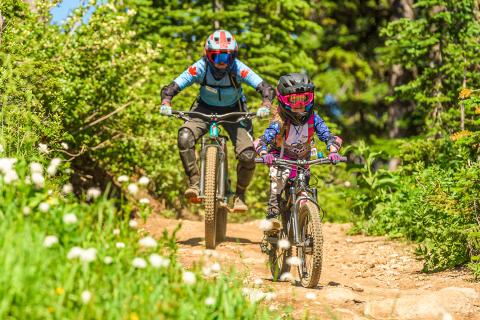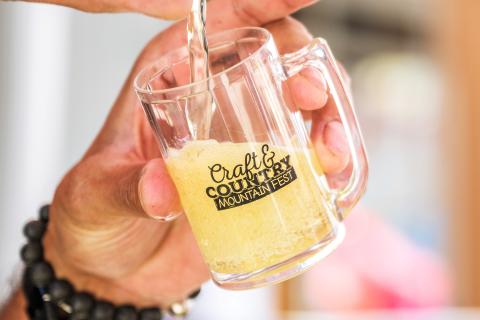Stretch it Out with a Pro – Ski & Snowboard Warm-Up & Stretches
If you're looking to take an online or COVID-19-safe in-person work-out class with Michelle's team, check out her website, Big White Mountain Fitness, for a full list and information on how to sign up!
WARM-UP
Prior to any exercise or sport, Michelle says it is important to do Dynamic Stretching. "This warms up the body and prepares the muscles, ligaments and joints for the work they are about to do."
A dynamic stretch is an active movement where joints and muscles go through a full range of motion. "Spending 5-10 minutes warming up prior to skiing or snowboarding can reduce the risk of injury and improve your flexibility and performance so that you can have a great day out on the mountain," Michelle adds. The stretches below should be repeated 2 to 3 times each.
Hip Releases
Tight hips affect almost all movements by limiting the range of motion and comfort during lower-body movements. Tight hips increase the strain on the low back, causing discomfort.
- Active Hip Rotations – hip flexibility, rotation, activates glutes and improves balance.
Action: Stand with hands on hips, feet shoulder width apart. Lift one knee to waist level and bend it at a 90-degree bend. Rotate the knee through the hip, out to the side and back to the front. Place the foot back on the ground and repeat on the other side.
Modification: Place hands on a wall or chair for balance.
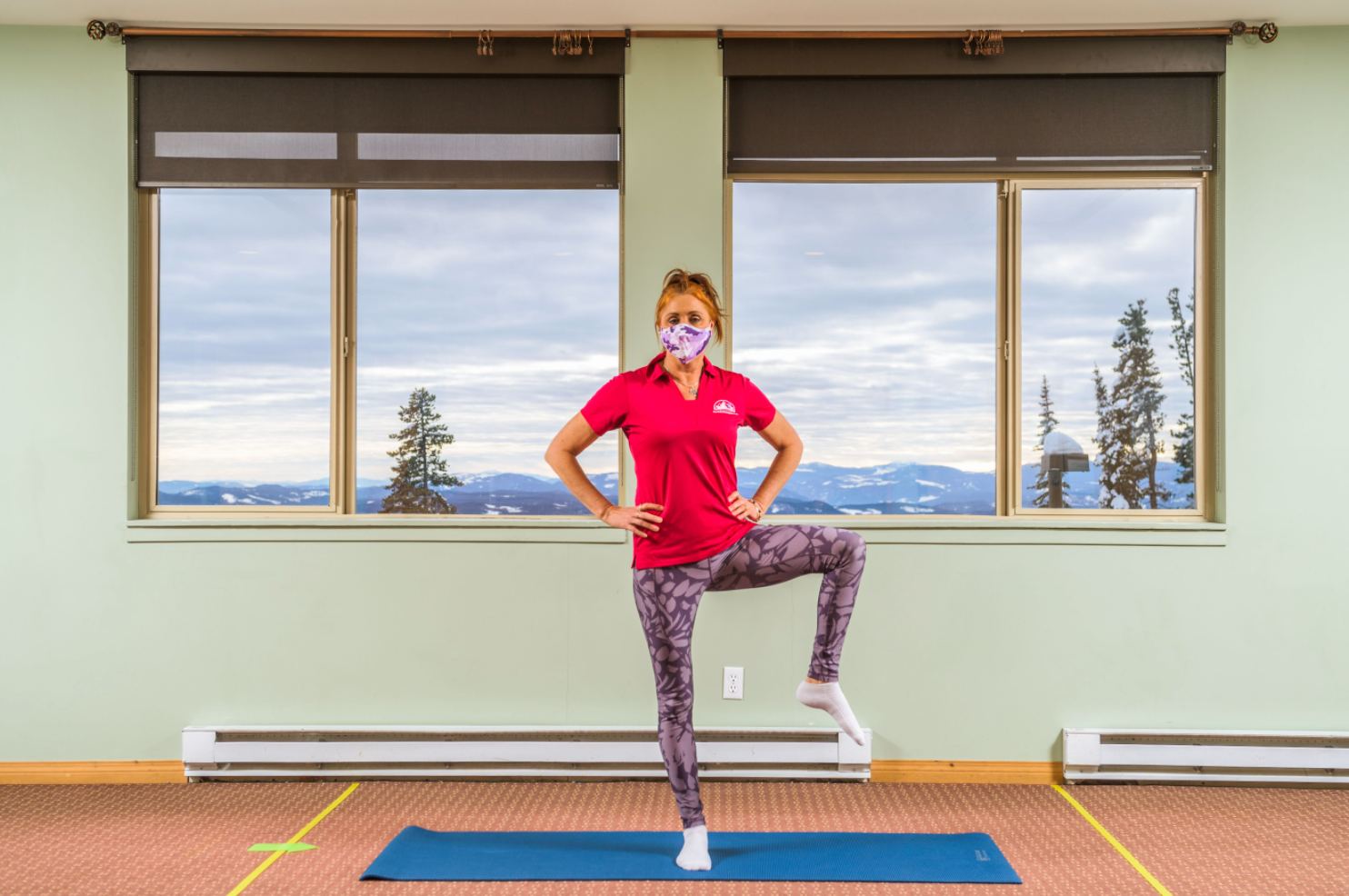
- Low Lunge - Active Hip Flexor Stretch – activates hip flexibility and glutes
Action: Step one foot forward to a lunge, placing the foot under the knee to create a vertical line along the shin. The knee of the front leg aligns directly over the ankle. The back leg is straight. Repeat on other leg moving from one to the other with some speed.
Progressions and Modifications: Lower the back knee to the floor to decrease the effort and stretch. Raise the same arm as the back leg straight up for an extra stretch.
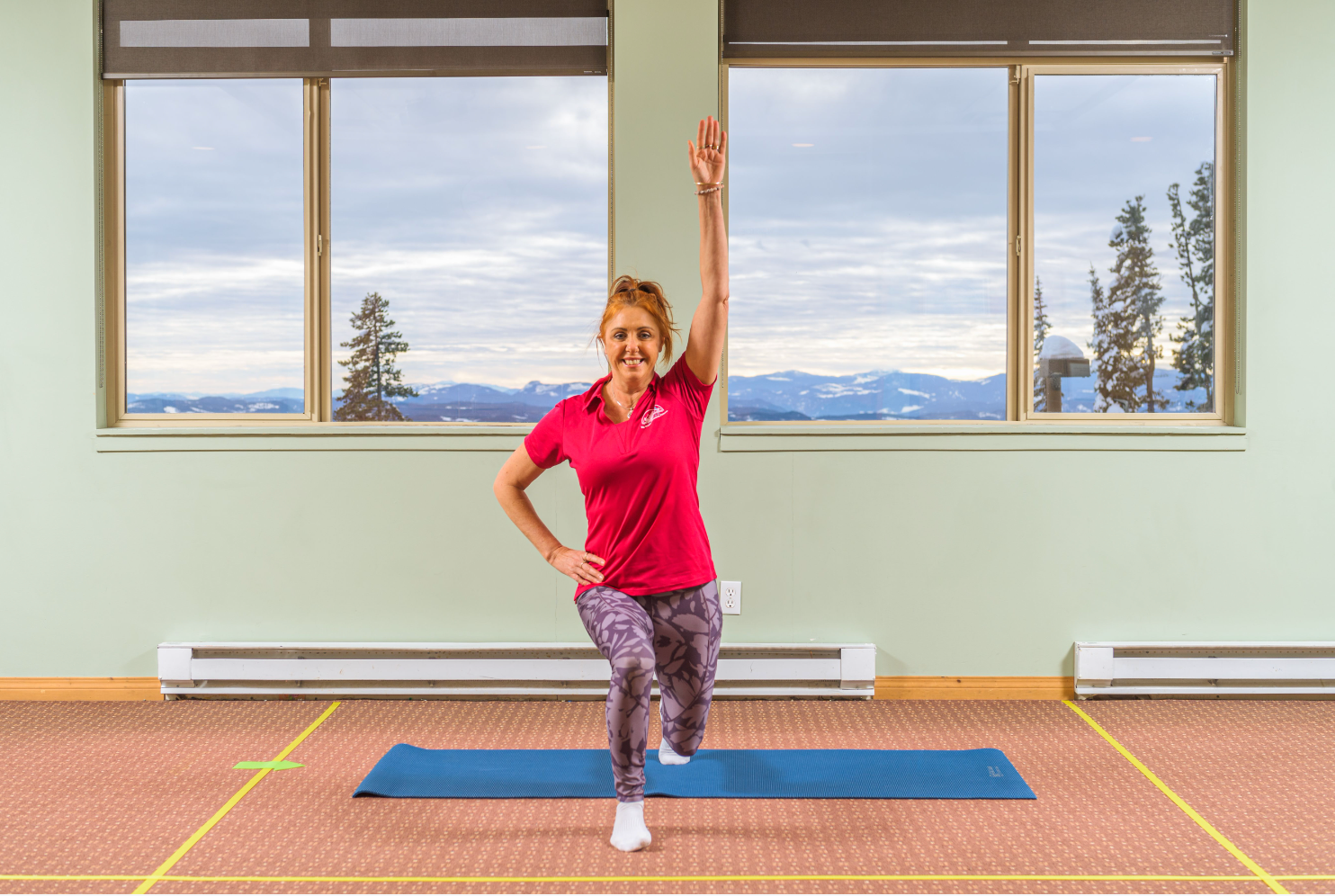
Foundational Movement
Squats are a foundational movement used getting on and off the chairlift. The muscles targeted in a squat include: gluteus, quadriceps, hamstrings, adductor (groin), hip flexors, calves and core muscles.
Squats
Action: Keeping the spine in a neutral and lengthened position, bend at the knees, hips, and ankles to lower the torso until the thighs are parallel or slightly higher than parallel to the floor as you descend into a squat. Lift the pelvic floor and lower-abdominal muscles to engage the core. The torso will naturally hinge forward from the hips as you lower into the squat. Press down into the feet to push up to standing. The arms reach forward as you squat, and they lower to the side as you stand up.
Alignment: Keep the spine lengthened and torso in a tall posture as you move through the squat. The knees stay aligned over the centre of the feet. Avoid letting the knees fall inward or outward as you squat.
Progressions and Modifications: Hold the bottom of the squat longer for more intensity. Increase the range of motion by moving deeper into the squat. Stand higher in the squat to decrease the intensity.
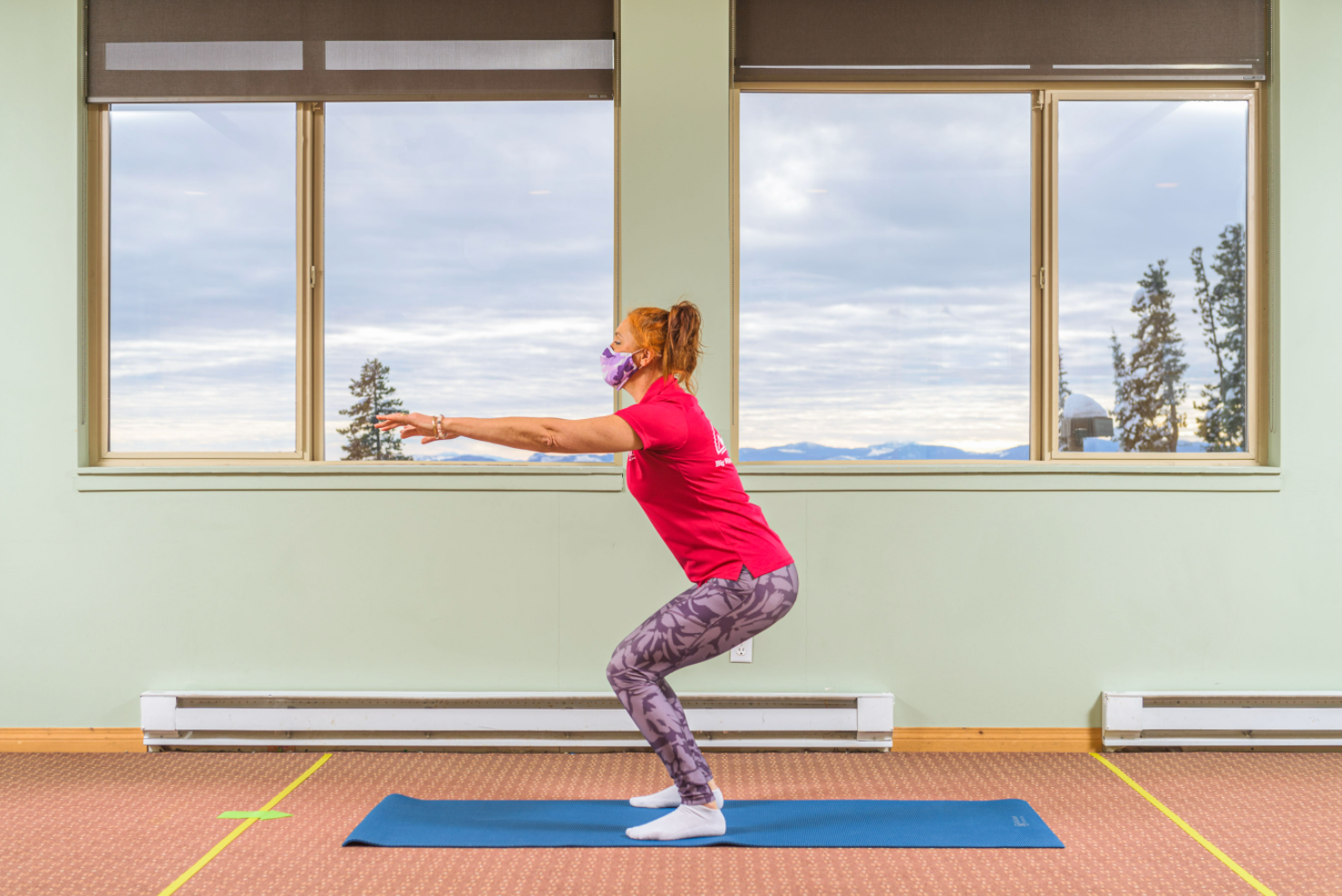
Prevent Knee Rotation and Injury
The Hamstrings serve as dynamic protectors of the ACL ligaments. To reduce your risk of ACL injury or if you are recovering from an ACL reconstruction, it is important to incorporate hamstring strengthening into your program. Tight hamstring muscles are a common contributor to lower back pain. Here are two active warm up exercises to activate and loosen the hamstrings.
- Leg Swings - Hamstrings
Action: Using a partner or a wall for balance swing one leg forward and backward while keeping hips square and opposite foot straight ahead. Keep your core muscles tight. Repeat on the other side.
Modification: Reduce the height of the swing if you have any lower back pain.
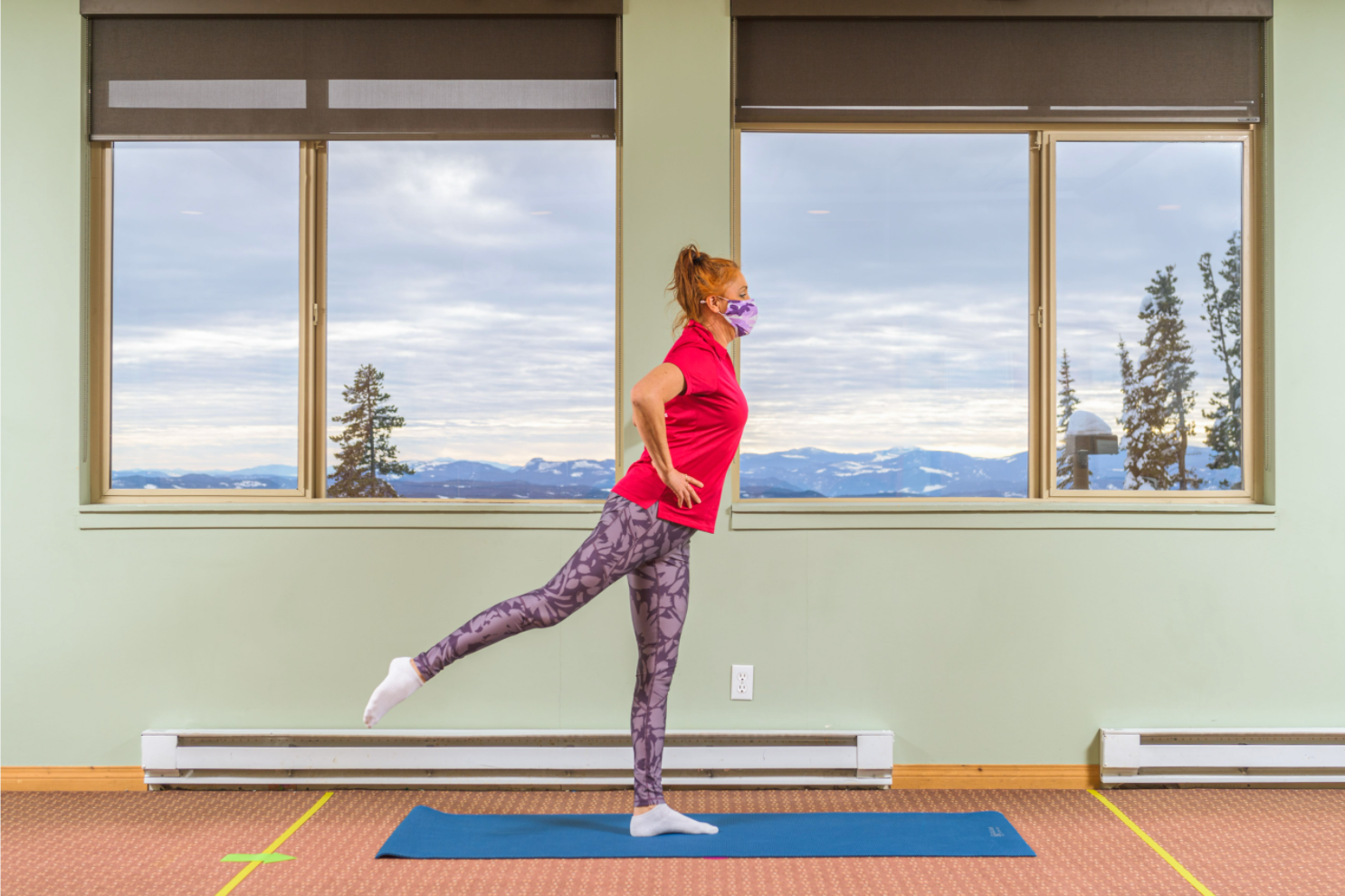
- Walking Straight Leg Kicks - Hamstrings
Action: Start with arms out at shoulder height, as you kick the left leg out in front bring to your right hand towards the left toes. Try to touch if possible. Alternate as you walk forward. The key to this warmup is to not bend at the waist.
Modification: Reduce the height of the swing if you have any lower back pain.
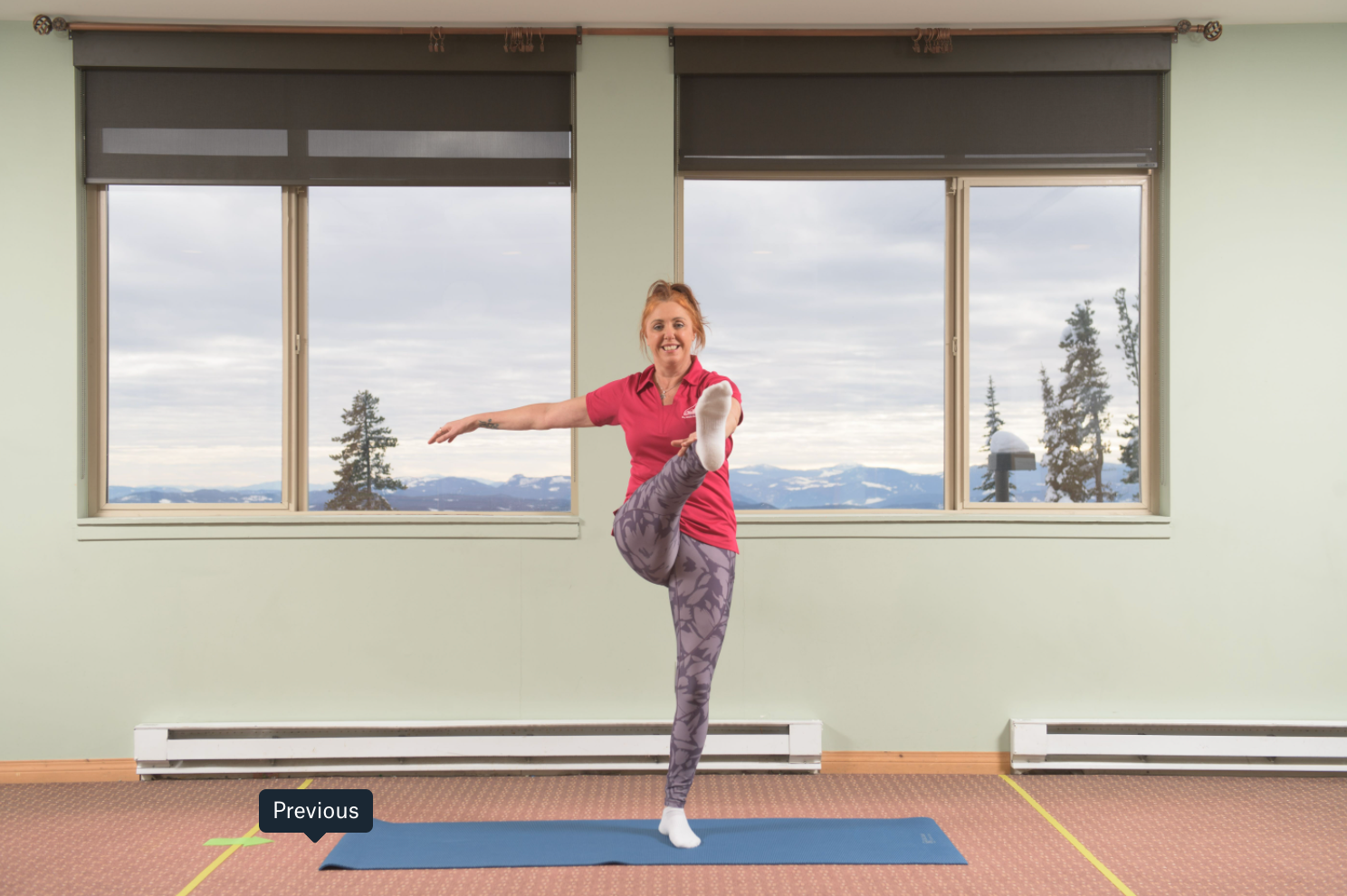
Quadriceps
Muscle tension in the quadriceps can lead to back and knee pain, overall tightness, and reduced mobility.
- Quad Stretch Walk – Quadricep muscles
Action: Grab the tip of your toe and pull your heel towards your butt. Transition into the next step and repeat with the other foot. Think about pushing forward through the hip that is being stretched.
Progressions and Modifications: As an advanced movement, try adding in a heel raise. To reduce the intensity, do the walking butt kick without the hand grab.
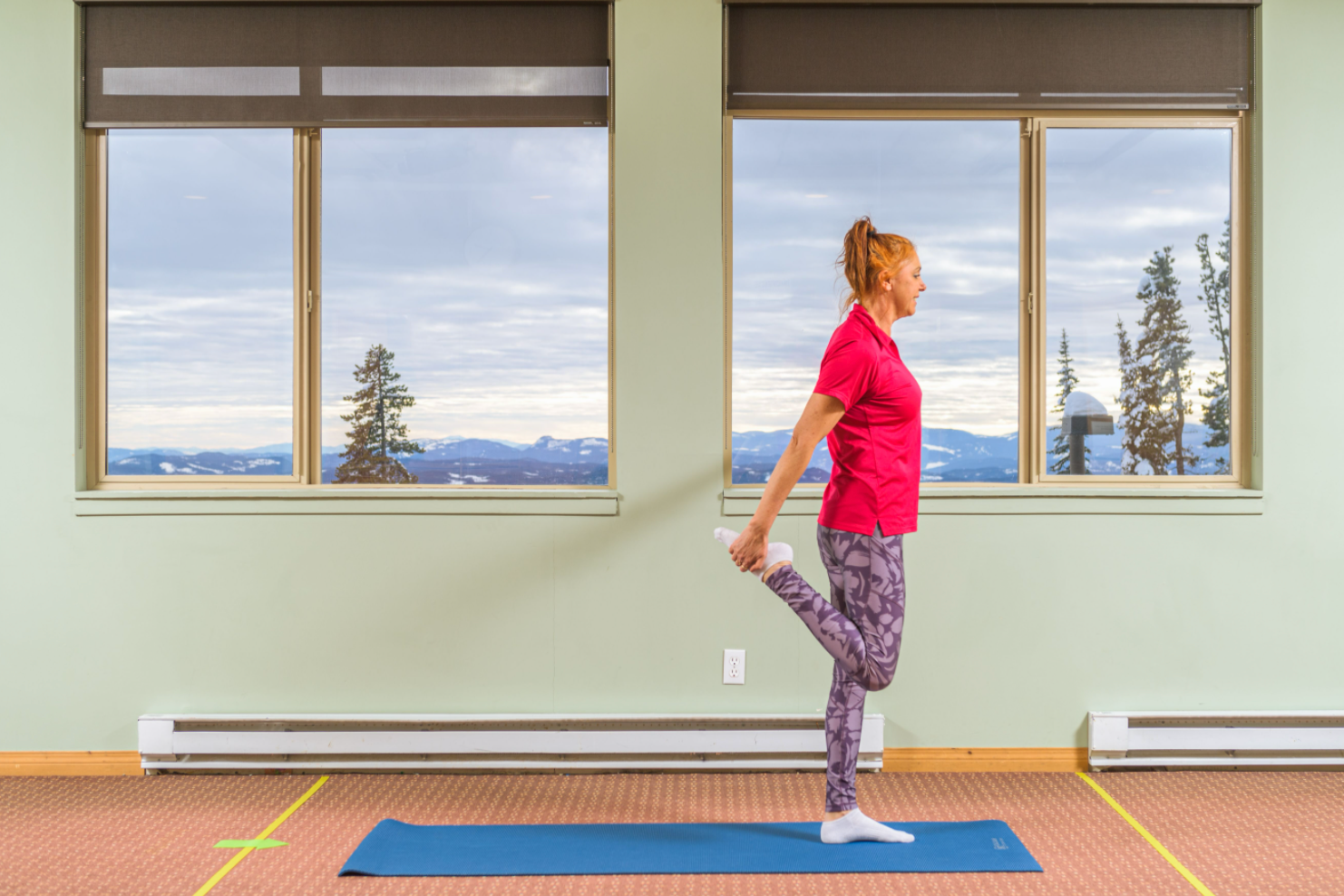
Back
Spinal Warm-Up is designed to reduce stiffness, improve flexibility, and increase blood flow to the spine.
- Reclining Twist – rotates spine and stretches back muscles
Action: Lie on your back with knees bent and feet on the floor. Open the arms out to the sides at shoulder height with the palms facing up. With the legs together, rotate both legs to one side while keeping the shoulders on the floor, head turned the opposite direction to the knees. Bring the legs back to centre, repeat in the opposite direction.
Alignment: Keep the shoulder blades on the floor as you rotate the legs to the side. Inhale to prepare. Exhale to rotate to one side. Inhale to come back up. Exhale to the opposite side. Breathe naturally. Hold for three to five breaths per side.
Progressions and Modifications: To increase the stretch, rotate to the side and straighten the top leg to reach the foot in front of the hip while in rotation.
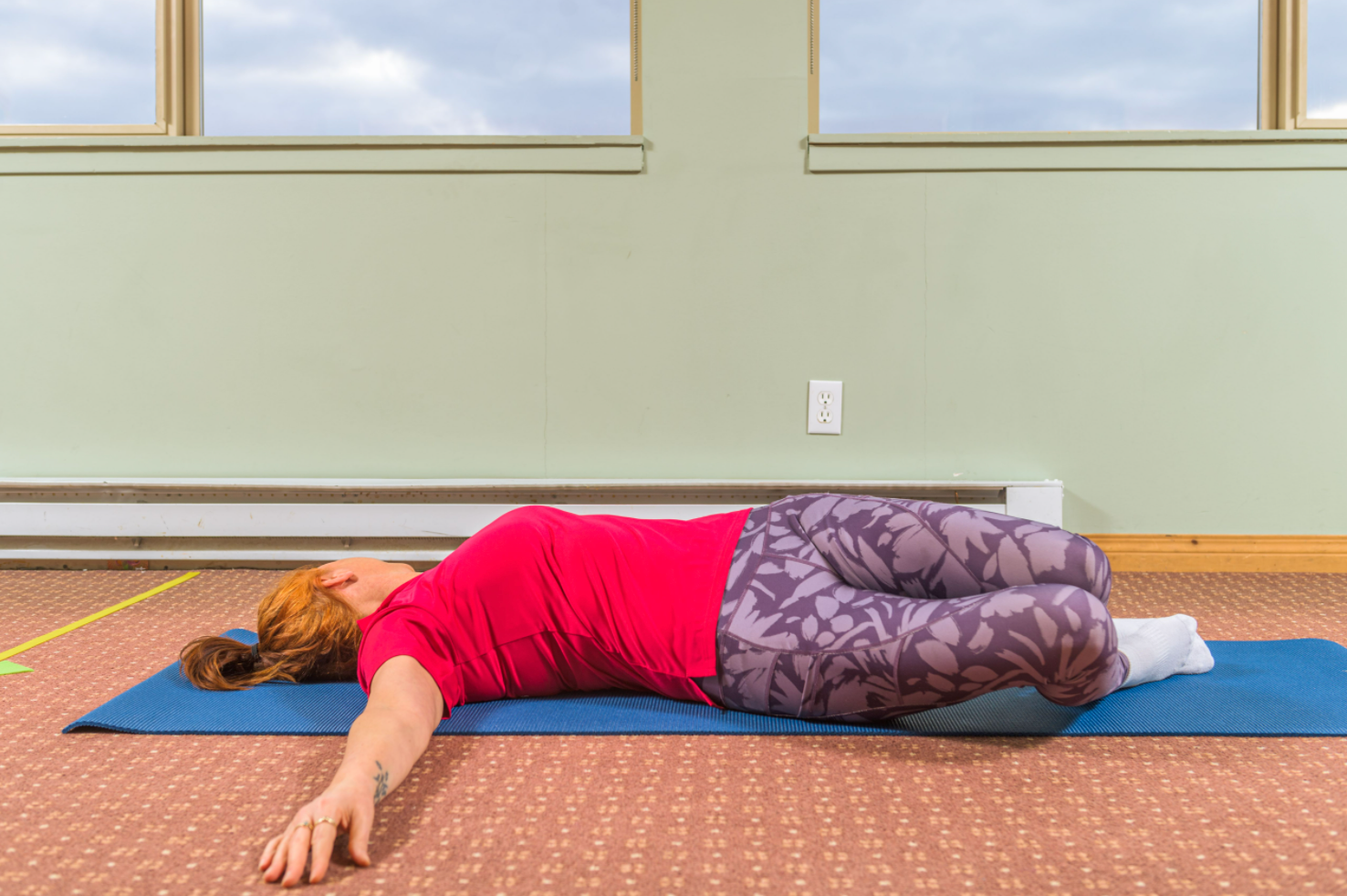
POST-SKIING & SNOWBOARDING STRETCHES
Post skiing and snowboarding is it important to do Static Stretching. This requires you to move a muscle to the end of its range of motion, and to maintain that position without pain for 20 to 45 seconds. Repeat these 2 to 3 times each. "This is a very effective way to increase flexibility, reduce soreness and help prevent injury," Michelle says.
Calf Muscles
- Calf Stretch - Gastrocnemius Stretch
Action: Stand holding a wall, place one leg behind you and lean forwards. Keep the back leg straight and both heels on the floor. Hold and repeat on the other side.
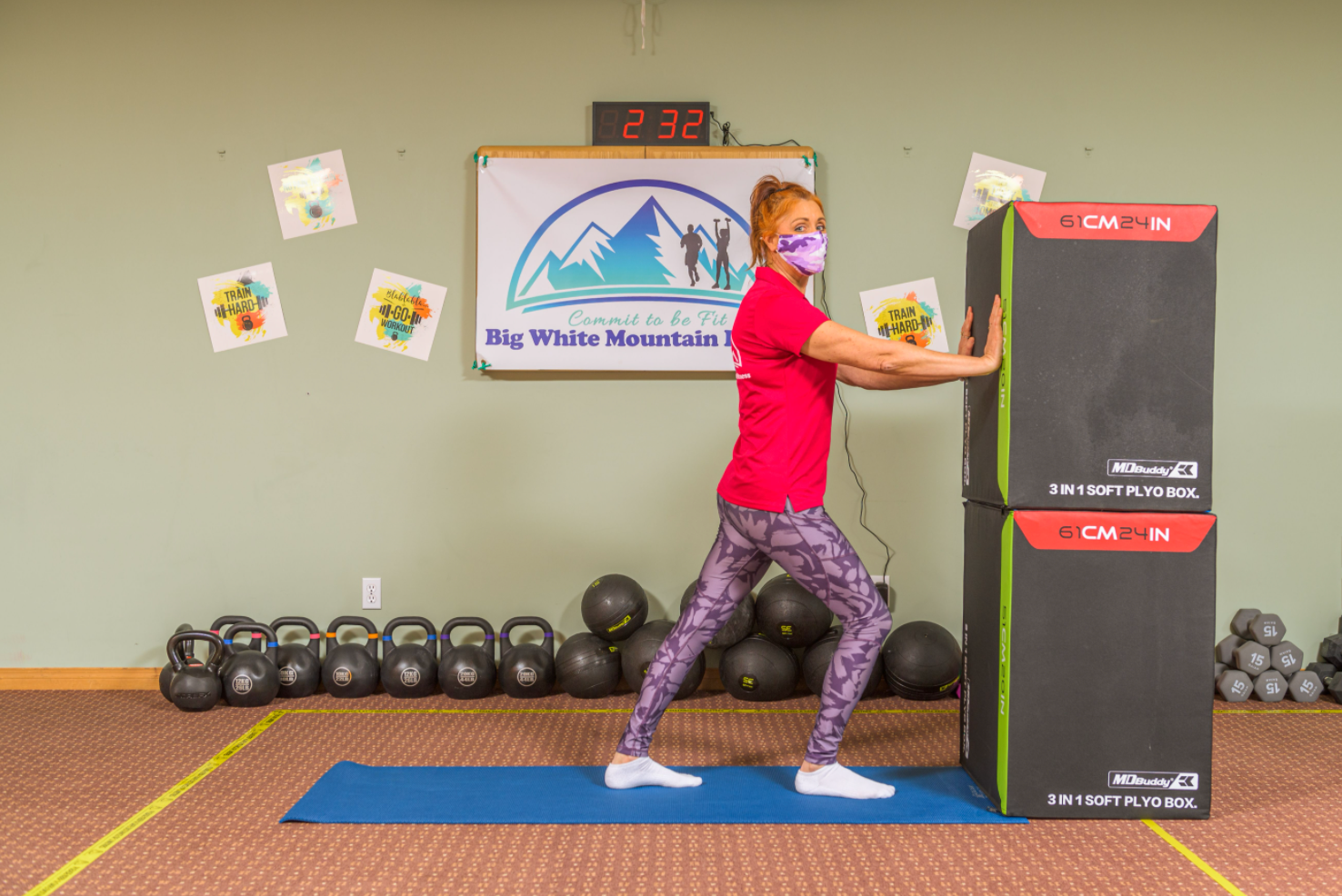
- Calf Stretch - Soleus Stretch
Action: Stand holding a wall, place one leg behind you and lean forward slightly bending both knees. Keep both heels on the floor. Hold and repeat on the other side.
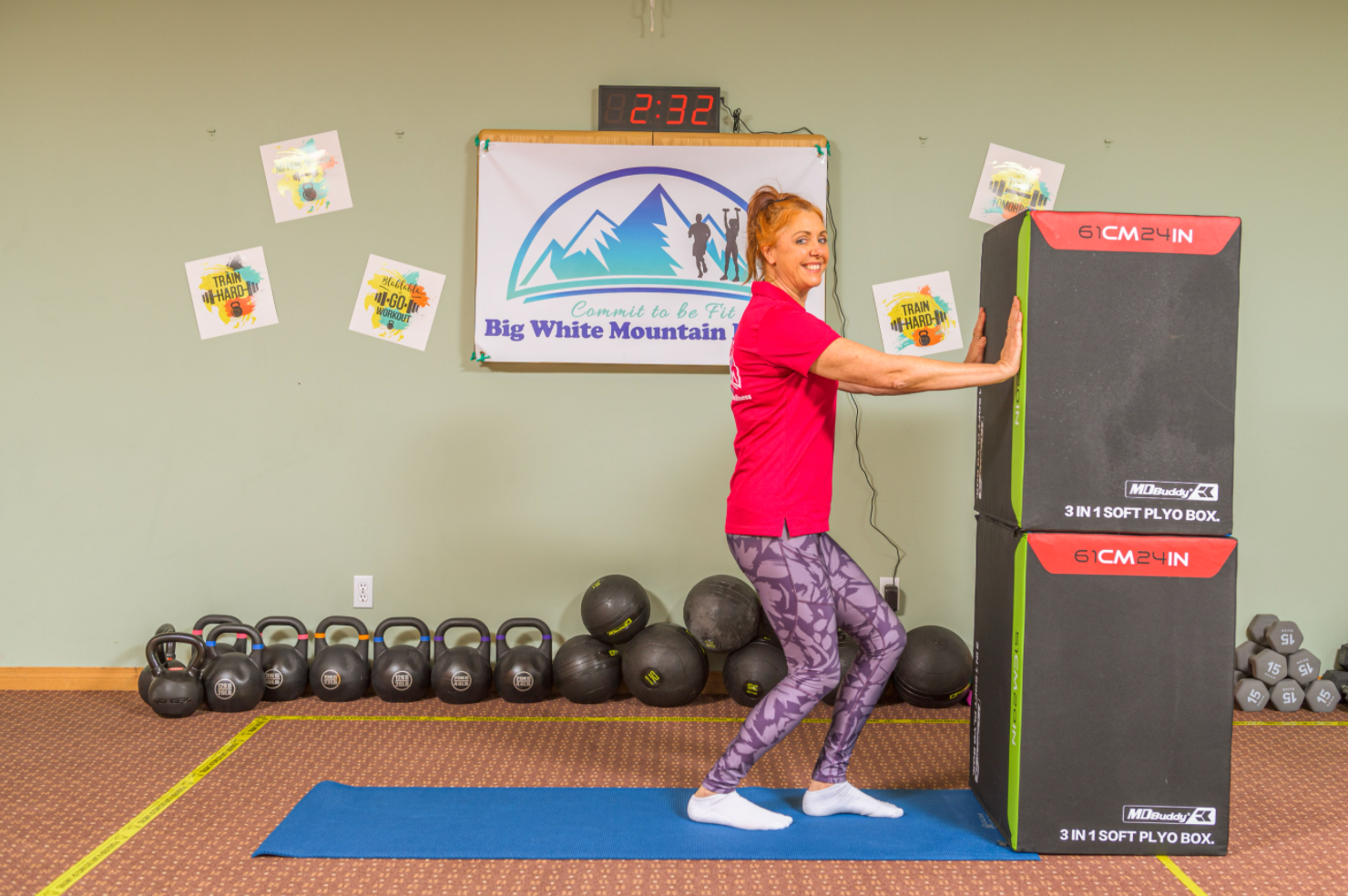
Quadriceps
- Static Standing Quadriceps Stretch
Action: Stand with feet together. Bend one leg bringing the heel towards the butt. Keep your spine straight, chest up as you pull your leg into your butt. Hold and repeat on the other leg.
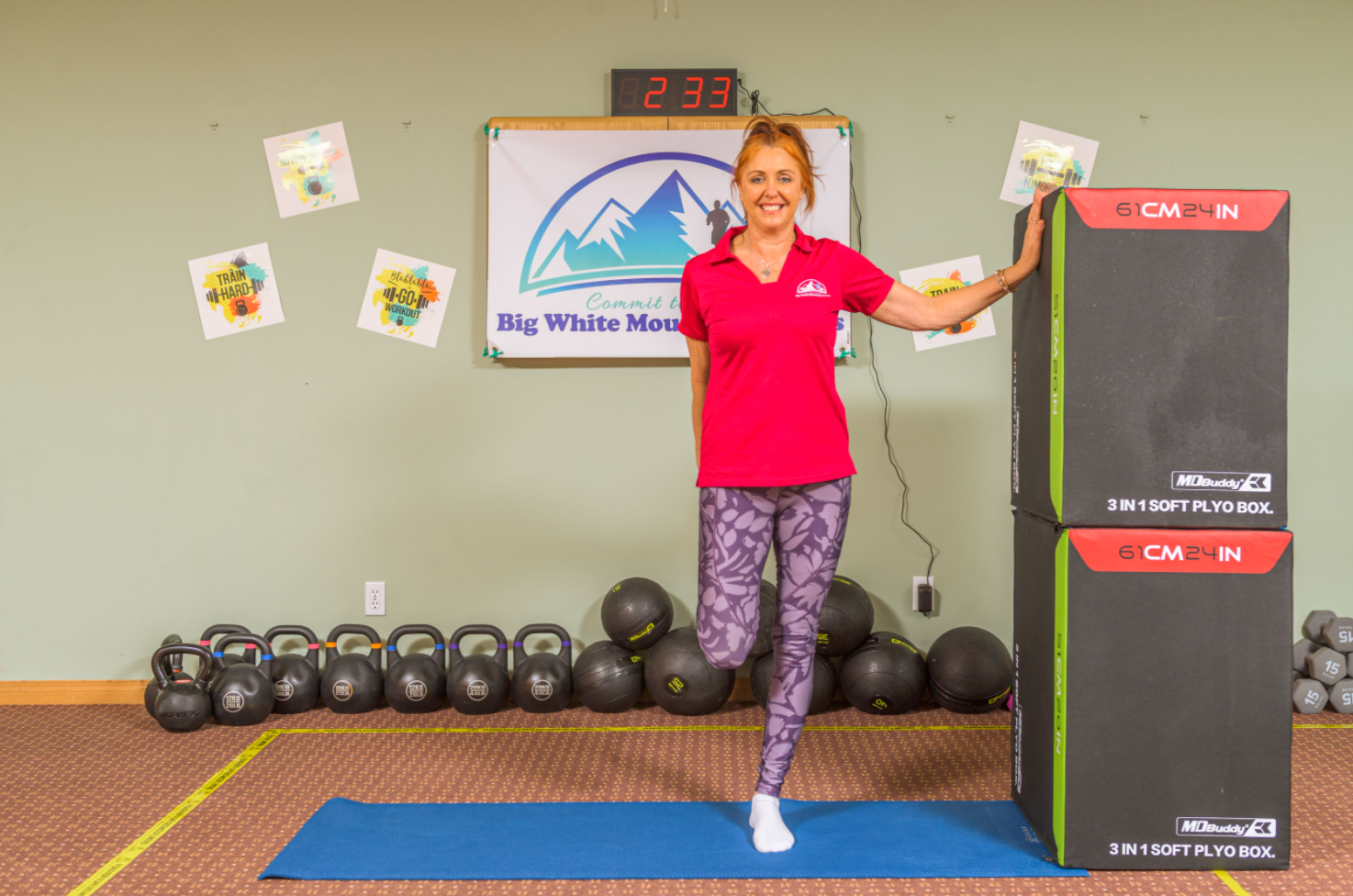
Hip Releases
- Low Lunge - Static Hip Flexor Stretch – stretches and opens hip flexors, stretches quads and glutes
Action: Step one foot forward to a lunge, placing the foot under the knee to create a vertical line along the shin. The knee of the front leg aligns directly over the ankle. Bring the knee of your back leg to the floor. You may need to adjust your front foot forward to allow space to drive your hips forward, keeping them square, tailbone tucked under with chest up and core locked on. Hold this position then repeat on other leg.
Progressions and Modifications: Place a small cushion or towel under the back knee for extra support. Bring the back foot to your butt and hold for an extra stretch.
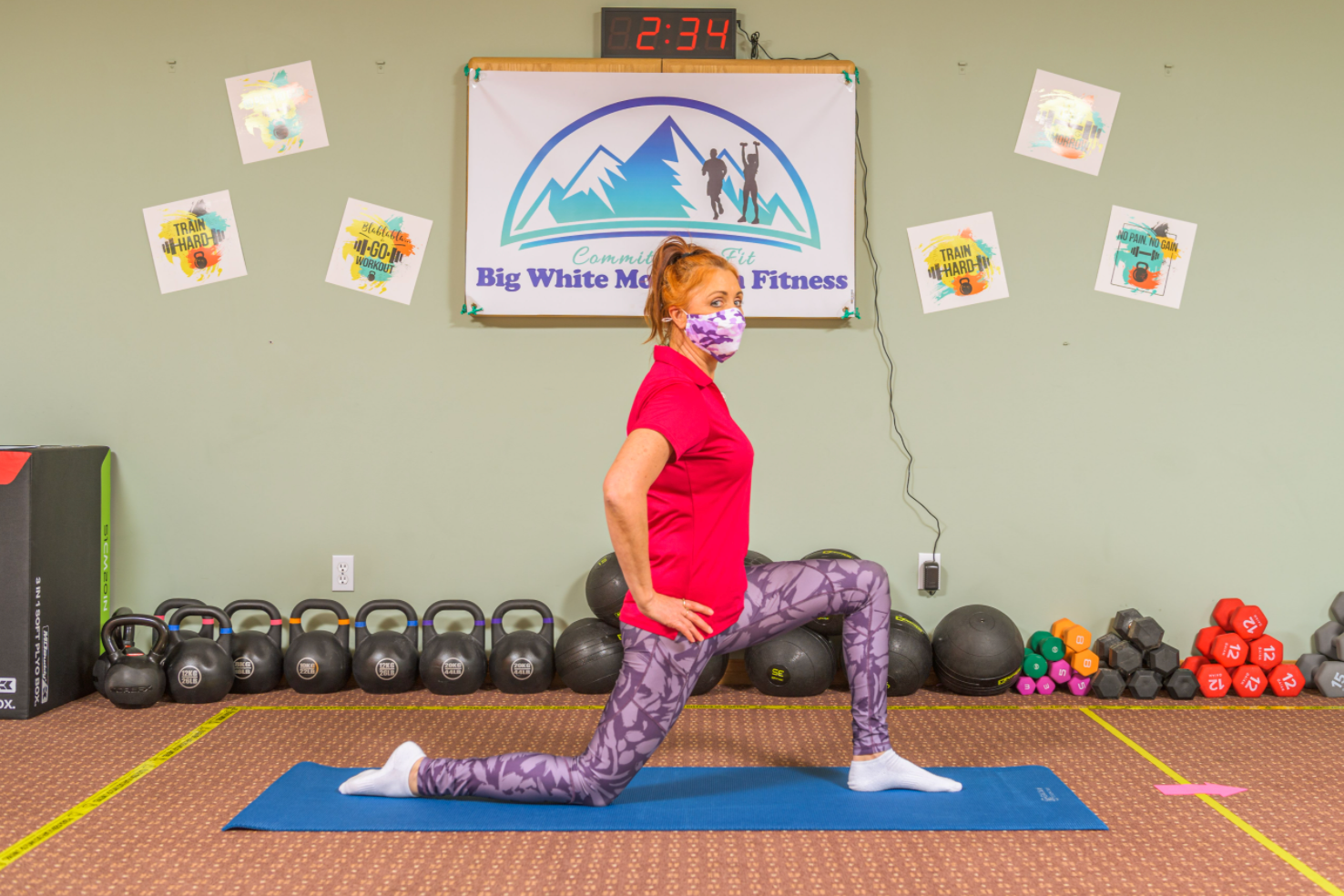
- Pigeon Stretch – opens hips and stretches both the hip rotators (buttocks area) and the hip flexors
Action: Kneel with your hands under the shoulders and the knees under the hips. Bring one knee forward toward the chest, place the foot in front of the opposite hip crease, and rotate the hip out so that the leg is on the floor with the hip in this open position. Straighten the other leg back and lower the hips toward the floor. Support yourself with your hands on either side of your front knee.
Alignment The back of the pelvis stays level. Avoid rolling to the bent-knee side; this puts undue strain on the knee. Hold and repeat on the other side.
Progressions and Modifications: For support in the pigeon pose, bring the forearms to the floor. If the hips are tilting to the side, place a block or rolled up towel under the hip on the side of the bent knee. If it causes discomfort or pain in the knee, avoid doing this exercise.
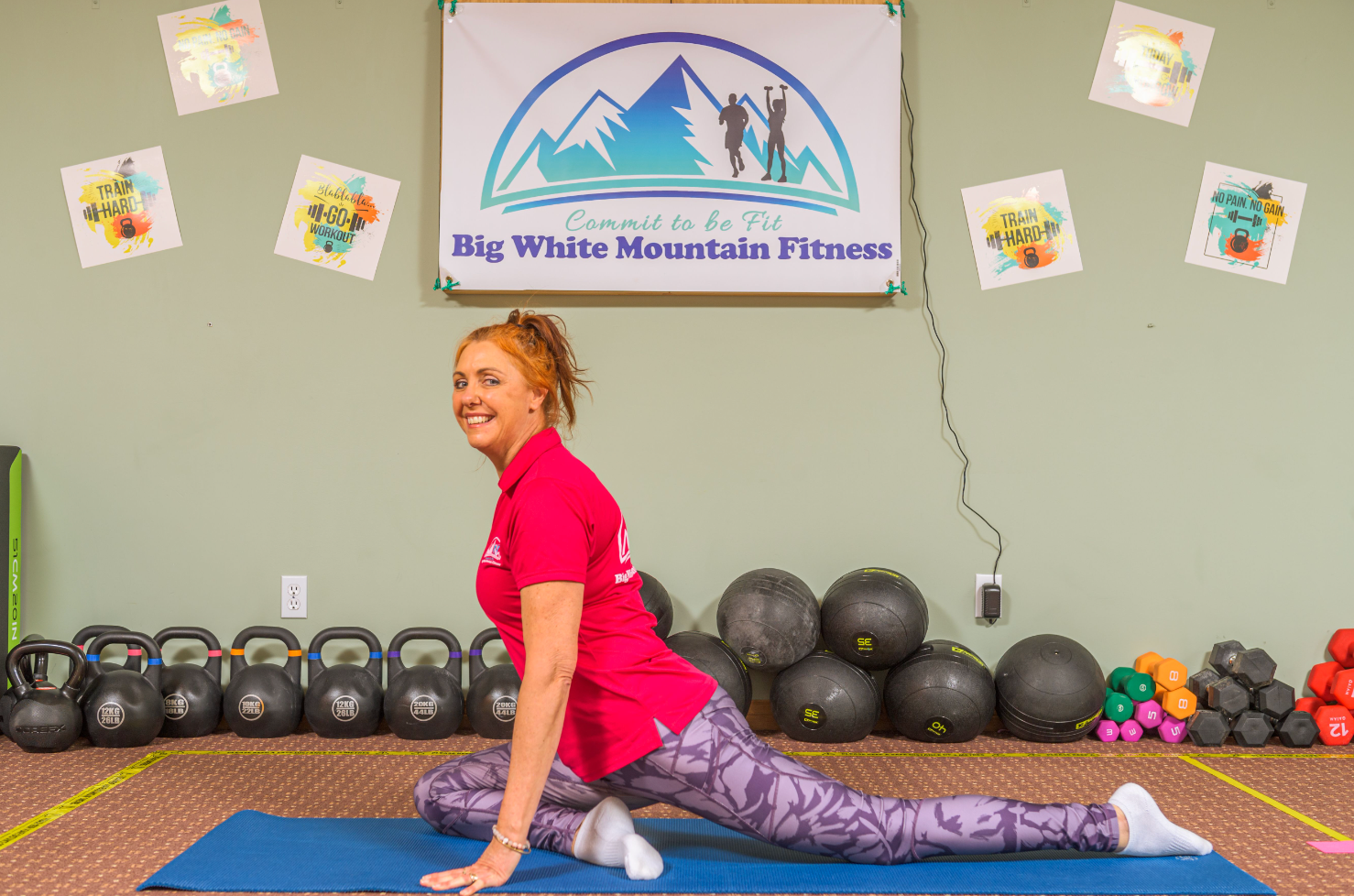
Hamstrings
- Reclining Hamstring Stretch – Hamstrings, adductor and abductor stretch
Action: Lie on your back with one knee hugged into the chest and the other leg extended straight out on the floor. The ankle is flexed, and the toes point up. Hold onto the back of the bent leg and extend the leg upward to the extent of your flexibility without bending the opposite leg. The heel of the lifted leg presses up.
Alignment: Ideally, both legs straighten; however, if your hamstrings are tight, bend the knee of the leg on the floor. The shoulders and shoulder blades stay on the floor. Avoid putting tension on the neck and shoulders. Hold and repeat on the other side.
Progressions and Modifications: Use a towel around the foot of the extended leg to make the stretch more comfortable.
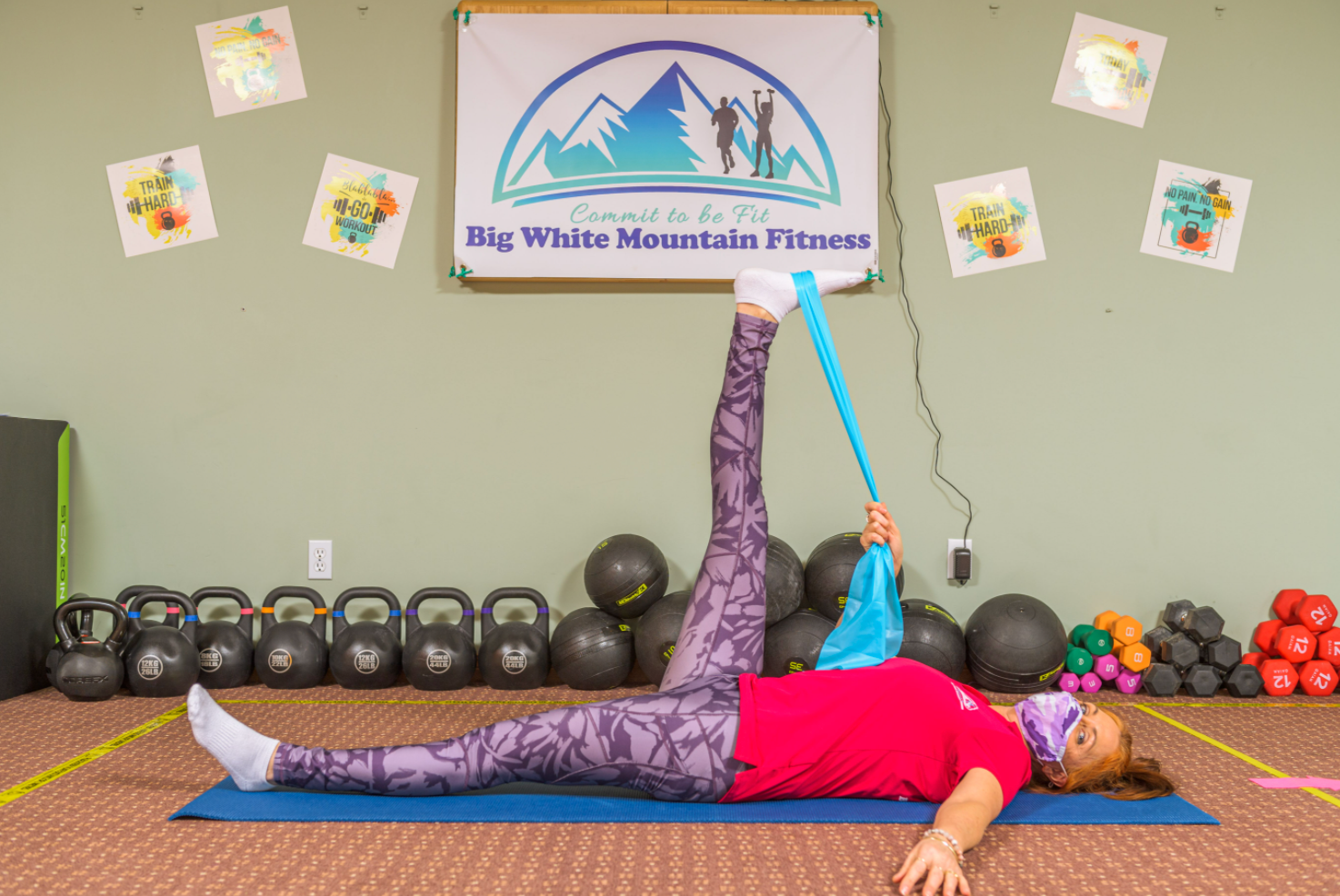
To add an Adductor Stretch – Hold onto the inside of the lifted leg, keep the leg straight and bring it out to the side.
To add an Abductor Stretch – Keep the leg straight and bring the leg across the body without lifting the hip off the floor. The leg crosses the midline of the body.
Glutes
- Reclining Figure-4 Stretch – Piriformis and adductor muscles stretch
Action: Lie on your back with your knees bent and feet on the floor. Place one foot across the thigh of the other leg. Flex the foot at the ankle and turn the hip out. Lift the opposite leg toward the chest.
Alignment: Keep the hips on the floor and avoid tension in the neck and shoulders.
Hold and repeat on the other side.
Progressions and Modifications: To decrease the intensity of the stretch, keep one foot on the floor. To focus on hip mobility, move the hips in a small circle in both directions.
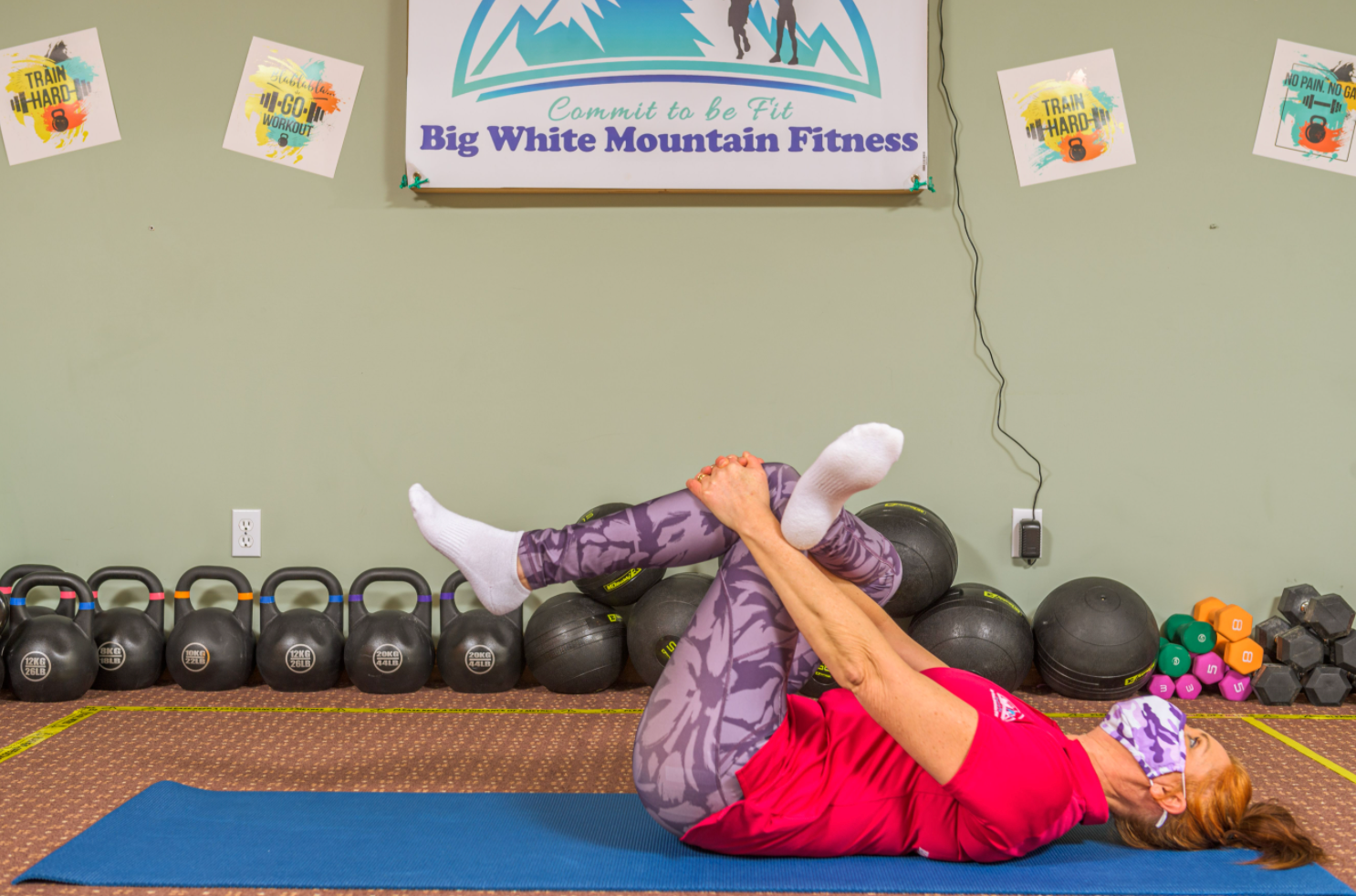
Back
- Reclining Twist – rotates spine and stretches back muscles
Action: Lie on your back with knees bent and feet on the floor. Open the arms out to the sides at shoulder height with the palms facing up. With the legs together, rotate both legs to one side while keeping the shoulders on the floor, head turned the opposite direction to the knees.
Alignment: Keep the shoulder blades on the floor as you rotate the legs to the side. Inhale to prepare. Exhale to rotate to one side. Hold and repeat on the other side.
Progressions and Modifications: For a deeper twist, draw the knee into the chest, holding that knee with the opposite hand, draw it across your body.

WARM-UPS ON THE GO
Here are some quick Warm-Ups on the go, in case you didn’t have time to stretch before getting outside and to help pass the time while waiting!
Lift Line
- Shoulder circles – place fingertips on shoulders and rotate shoulders in circles forwards then backwards
- Waist twists – feet shoulder width apart, knees slightly bent. Gently twist at the waist from one side to the other keeping the hips locked and letting your head follow the twist direction.
- In/Out Squats – start with the feet close together and lower into a gentle squat. Next step one foot away and lower into a wide squat.
- Side lunge sit backs - Step to the side and sit back into your hip. Perform a slight rocking motion side to side while dipping into the hip each time.
- Knee rotations - Place both palms on your knees, moving around in a circular motion with knees slightly bent. Keep knees and ankles tight together. Repeat opposite direction.
On the Chairlift
- Wrist rotations
- Neck rotations
- Ear to shoulder
- Turn head side to side
Mountain Top
- Hip Thrusts
For snowboarders – from sitting, once you strap into your board, place hands behind you and push your hips forward and up.
For Skiers – from standing, place your poles each side of you for stability and thrust your hips forward and back.
